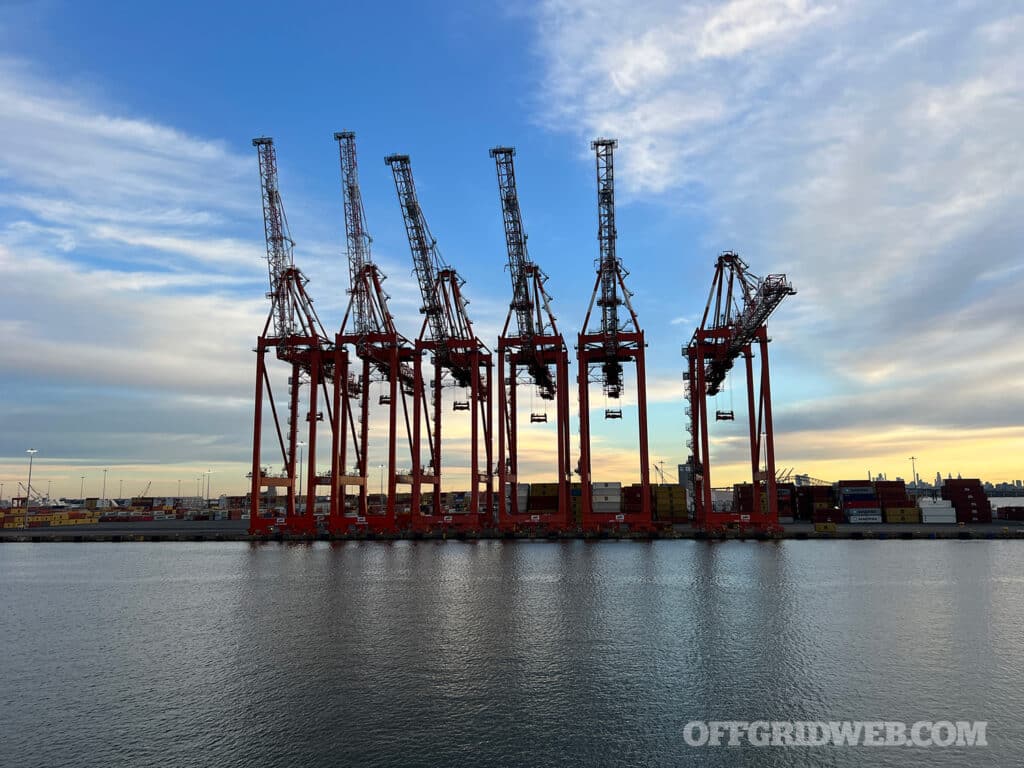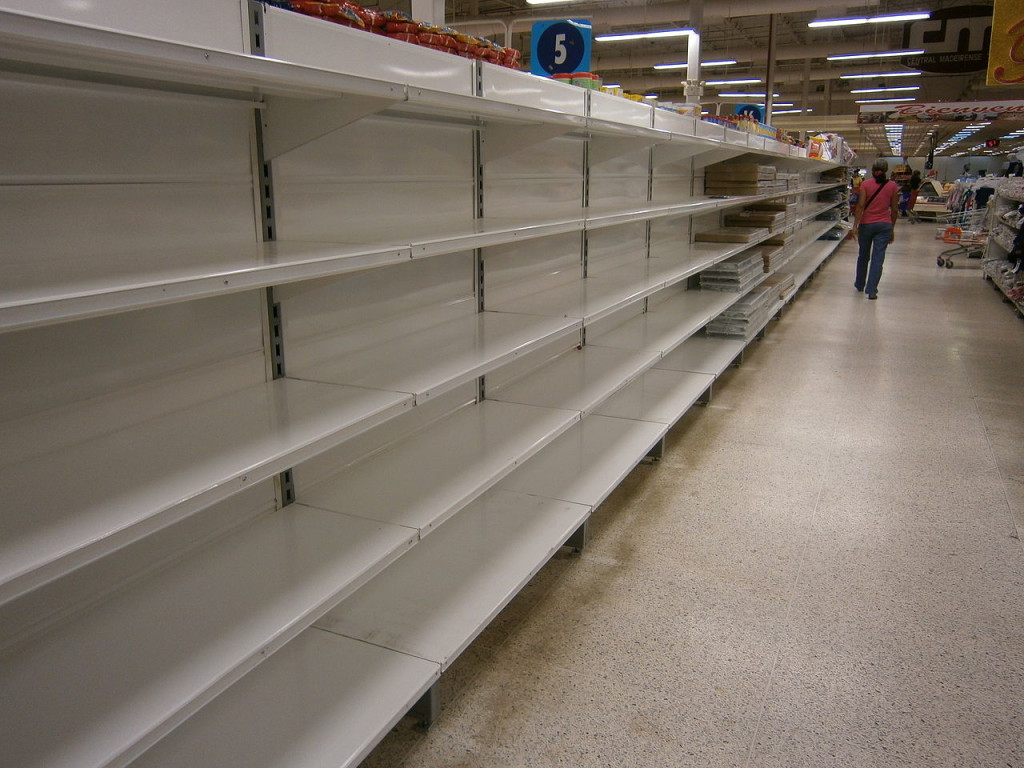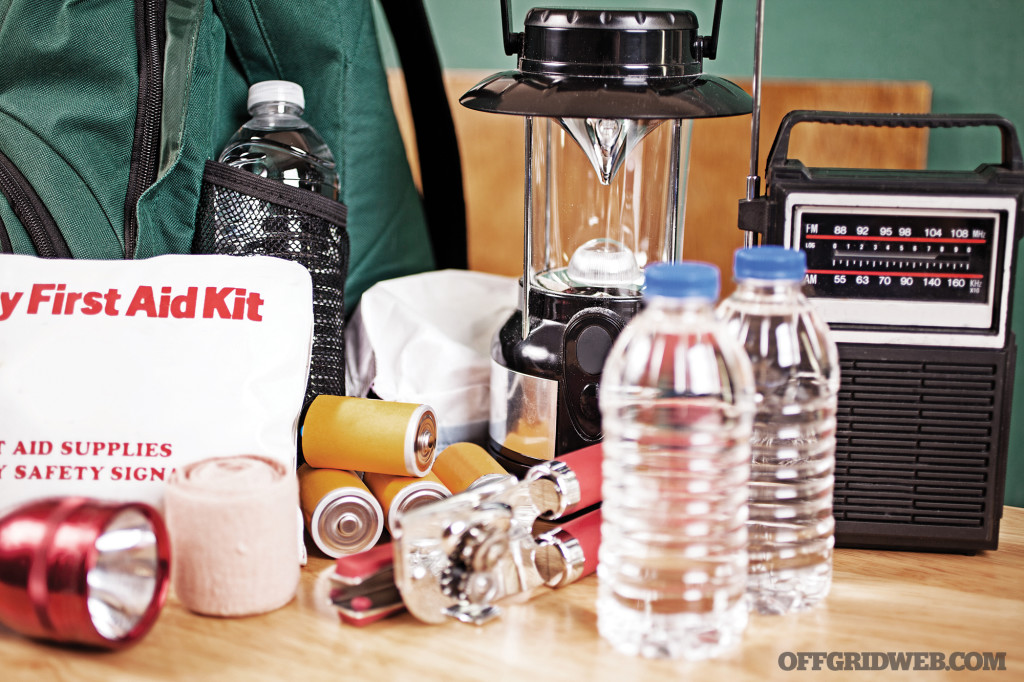One of the oldest forms of commerce in human society is the barter system, and it was considered the norm for a majority of human existence before the advent of currency. While it is not used as our primary method of obtaining goods and services in today's modern society it is still alive and well in small ways through smaller groups of people, small towns, and in less developed areas of the world.
For those of us living in developed areas we rely on the supply chain to get us the goods we need, and in exchange for the currency we make while working we have access to everything we need. What happens if there is a failure in that supply chain? How do people and communities ensure they have the resources they need? The answer lies in reviving the barter systems of old and working together for the benefit of not only ourselves, but the community around us.
Before we get into how the barter system can help us, let's take a look at how our modern supply chain works, how fragile it really is, and the many events that can lead to the collapse of the system that ensures we have access to our resources.

Above: The supply chain relies on infrastructure like electric power to keep moving.
How The Supply Chain Works
A supply chain is defined as the network of all individuals, organizations, resources, activities, and technology involved in the creation and sale of a product. It encompasses everything from the delivery of source materials from the supplier to the manufacturer to its eventual delivery to the end user. As you can imagine, there are a lot of moving parts to make any one final product available for purchase. The steps go something like this:
- Planning the inventory and manufacturing processes to ensure that supply and demand are adequately balanced.
- Manufacturing or sourcing the materials needed to create the final product.
- Assembling parts and testing the product.
- Packaging the product for shipment or holding it in inventory until a later date.
- Transporting and delivering the finished product to the distributor, retailer, or consumer.
Take any one step or resource out of this chain, and the chain breaks. Supply chains are complex and deeply rooted in the very existence of our society. The more we evolve into a society that relies on same- or next-day delivery, the more important the supply chain becomes. Unfortunately, that also makes us almost completely dependent on supply chains to function correctly.

The Docks in New Jersey are one of the main hubs for unloading cargo in the Northeast U.S.
The Fragile Nature of the Supply Chain
The problem is that our supply chain is extremely fragile. The United States has learned to run on a “just-in-time” delivery system. We see it at home with our daily Amazon deliveries, sometimes arriving the same day we order them. What some might not realize is that most big-box stores operate the same way. When you walk into a Walmart around 8 p.m. on a Tuesday night and see aisles full of pallets of assorted goods waiting to be stocked, it’s because those items were ordered the night before and are ready to go on the shelves 24 hours later.
The problem with a just-in-time system is that the smallest crack in the system can instantly start to create issues. Let’s look at that from the first point in the supply chains. Raw materials. If a farmer has a drought and can’t grow wheat, how many different products does that impact the back end of our supply chain?

Above: Empty shelves during a supply chain collapse.
Supply Chain Failures
So, what can cause a failure in the supply chain? Just about anything. Some of the more common causes in recent years are natural disasters. We’ve been seeing a lot of weather anomalies in regions not typically known for them, such as wildfires in Canada or massive flooding from hurricanes like Katrina in 2005 or Helene in 2024.
What about snowstorms producing so much snow that travel becomes impossible? Remember the storms in the early ‘90s that pummeled the East Coast? Or the “snowpocalypse” in Texas in 2022 that essentially shut down the state because they weren’t equipped to handle such weather? What about the time an Evergreen ship got stuck in the Suez Canal in March of 2021? On March 28, at least 369 ships were queuing to pass through the canal, stranding an estimated US$9.6 billion worth of trade.
Those numbers affected the global supply chain. These are some of the more extreme examples, but this trickles all the way down to the most local level. What happens if your local pharmacy doesn’t get their delivery on time because for any number of reasons like the transport truck broke down or the warehouse lost power and now you can’t get a medication that is vital to your survival?
In some situations, roads can become impassable, infrastructure can be damaged, personnel can be impacted and the supply chain quickly decays. It’s important to note that when weather impacts a specific region, it can sometimes take months or even years for things to return to normal.
What about issues with the workforce? A large union strike like we saw with the UPS drivers in 2023 or the International Longshoremen's Association in 2024 or a global pandemic like we saw in 2020 can quickly cripple the people who keep the supply chain moving. Any adult today lived through the pandemic. That was unlike anything we’ve ever seen before, and we hope never to see again, but it can’t be ruled out.
It was the worst shock our supply chain has ever faced. The global economy essentially stopped, and our day-to-day lives changed drastically. Some aspects will never go back to the way they were before. Then there’s the possibility of cyberattacks or interference from a foreign country. Remember the ransomware attack on the Colonial Pipeline in 2021? These are just a few examples of what can cripple our supply chain and economy.

Above: Canning can preserve perishable foods for long periods of time
How a Barter System Could Fill the Gaps
So how do we stay ahead of these issues? What can we do to combat the vulnerabilities of a just-in-time delivery system? One answer might be to take a deeper look at a barter system. A barter system uses direct trade for goods, a practice that dates back to around 6000 BC with Mesopotamian tribes. Ancient people traded food, spices, and weapons.
In the Middle Ages, Europeans traveled across the globe to barter crafts and furs in exchange for silks and perfumes. By the time Colonial America emerged, people exchanged musket balls, deer skins, and wheat. While money eventually replaced the barter system, bartering has never truly disappeared and remains a viable system today. It may be worth revisiting more seriously.
Benefits of Barter in Times of Crisis
In the collapse of regular society and supply chains, it seems natural to revert to this tried-and-true system. Whether it’s a long-term or short-term problem, it’s in your interest to prepare for this before you need it. What do you have to offer? Skills, resources, or goods—what can you trade for the things you and your family need? Here are some ideas:
- Food and Water: Trading food products for essential services. Do you grow anything? Can you produce clean, safe drinking water? Do you have a stockpile of preserved goods?
- Skills and Labor: Offering skilled services (carpentry, plumbing, medical care) in exchange for tangible goods or other services.
- Craftsmanship and Homemade Goods: Woodworkers, tailors, and artisans exchanging handmade items for other necessities.
- Energy and Utilities: Trading energy resources like firewood, solar-powered batteries, or fuel for essential goods.
Bartering also offers flexibility in situations where currency loses its value. For example, in the Weimar Republic in post-World War I Germany, hyperinflation rendered money practically worthless, and citizens turned to barter for everyday needs.
Similarly, Venezuela’s currency collapse has prompted the use of bartering for food and medical supplies. This highlights the adaptability and sustainability of barter when money itself becomes unstable.
It is also important to consider your location. While rural areas may have more access to resources like land and firewood, urban communities might adapt differently to bartering, especially with limited space.
For example, specialized skills like repair services, urban farming, or water filtration might be highly valuable in city environments. Consider building a library of skills rather than relying solely on stockpiling physical items you might not have space to store.

Above: Hydroponic Gardening is a good way to produce food year round
Modern Examples of Barter Systems
Bartering isn’t just a historical relic, it’s alive and well today. In Greece, which faced a severe economic crisis in the 2010s, bartering networks popped up across the country, allowing people to exchange services like teaching or home repairs for food and clothing. Similarly, in the wake of the COVID-19 pandemic, some communities turned to online barter platforms where users exchanged goods like household items or skills such as tutoring in return for essential supplies.
As I maintain and add to my preps, I’m starting to look at things more specifically from a barter standpoint. I need to stockpile what my family needs, but also items others may find valuable. For example, I’ve invested in a still. A still can be used for a variety of purposes: making distilled beverages, essential oils, clean drinking water, and even certain medicines.
All these products can be useful to me and valuable to others for barter. I’ve also been investing in my skills. Welding, mechanics, and construction are areas that come easily to me but might be foreign to others. These skills could be valuable in a barter system.
Challenges and Risks of Bartering
Does currency have a place in a barter system? Absolutely, but it might not look the same. Currency could be made up of precious metals, similar to our first coins, or even bullets—how many .22L rounds would equal a “dollar”? Establishing value is one of the challenges of a barter system. Determining equal value between goods and services can be difficult.
Would you stitch up a leg wound for a loaf of bread? How many chickens is a running motorcycle worth? Perishability is another factor to consider, as some goods like food can spoil and may not be suitable for long-term bartering.
If you are proficient in food preservation maybe you can take tomatoes that would normally only last a few weeks and jar them, so they are shelf stable almost indefinitely. Additionally, bartering tends to work best in tight-knit or local communities where trust and mutual understanding are high.
Modern technology offers digital and modern adaptations to bartering. Peer-to-peer barter apps and digital platforms like social media groups or local online forums facilitate trade in real-time. Facebook Marketplace already serves as a place where people can network and barter. However, in a grid-down situation, these digital options may not be available.

Above: Common Emergency Supplies make great barter items.
Taking Action to Build Barter Systems Now
What steps can you take to implement a barter system in your community? First, identify your resources and skills. Encourage individuals and families to assess what they can offer. Next, set up physical or digital places where people can meet and discuss potential trades. Barter markets or swap events can foster community participation.
Establishing barter meetups now would allow your community to get used to the system and feel comfortable with the concepts. It may also be important to develop a loose set of guidelines to ensure fairness, safety, and efficiency. Doing this now, before a crisis occurs, can be hugely beneficial to you, your family, and your community. It’s always easier to have a system in place before disaster strikes than to implement it afterward.
Bartering might not be the be-all and end-all of survival strategies, but it fits into a larger strategy for self-reliance and resilience. Bartering alone may not solve all problems, so complementing it with other preparedness measures like learning how to grow food, purify water, or generate energy independently can help you become more self-reliant overall.
I’m a firm believer that a rising tide raises all ships, and while it’s important to build a strong community of like-minded and capable people, that journey starts in your own home. Making you and your family as prepared as possible is just the beginning.
The goal should be to create a network of self-reliant individuals, each with something valuable to offer. Bartering can be a key part of that larger picture of resilience, but it’s the combination of preparation, skill-building, and resource management that ultimately sustains communities when the unexpected occurs.
Final Thoughts
In the end, having a system like barter in place doesn’t just help ensure access to vital goods and services during a crisis—it fosters a sense of connection and cooperation. When the grid goes down or supply chains collapse, people will naturally turn to one another for support. Being prepared for that moment, both individually and as a community, could make all the difference.
The sooner we begin these conversations and take action, the better equipped we will be to face whatever challenges the future might hold. Whether through learning new skills, gathering valuable resources, or building trust in local networks, we have the opportunity to strengthen our communities and enhance our overall resilience, starting right now.

Above: Canned Food and dry goods are ideal for long-term storage.
Quick Reference to Common Barter Goods
Stockpiling goods, the ability to grow or raise your own food, and having some basic skills can put you in a great position during any emergency situation that results in a collapse of the supply chain. Having some extra stock and the willingness to lend your skills to others can enable you to barter with others in the community and not only survive but thrive!
Here are some commonly barterable goods and services with some examples in each category. This far from an exhaustive list, but should be enough to get your wheels turning:
- Canned Food: Vegetables, Meat, and Tuna Fish.
- Dried Food: Rice, beans, and pasta.
- Clean Water: Bottled water and filtration systems.
- Baby Supplies: Diapers, clothing, and shelf stable formula.
- Weather Related Gear: Raincoats, winter clothing, and umbrellas.
- Building Materials: Plaster, Paint, and lumber.
- Hygiene Items: Toothpaste, soap, and deodorant.
- Batteries: AA, AAA, C, and D cell.
- Precious Metals: Silver and gold coins.
- Footwear: Sneakers, work boots, and weather specific footwear
- Fresh Produce and Meat: Grow produce and Raise Livestock.
- Tools: Hammers, saw blades, screw drivers, and cutting tools.
- Hardware: Screws, nails, and washers.
- Comfort Items: Blankets, pillows, games, books, and liquor.
- Common Medication: Tylenol, Advil, cold medication, and allergy relief.
- First Aid Supplies: Bandages, Sutures, disinfectants, and gauze.

Above: Bartering is not just about supplies, you can barter skills as well. Medical skills can be in high demand when supply chains collapse.
Barter Skills
- Automotive Repair Skills
- Cooking Skills
- Sewing and Tailoring
- “Handyman” and Maintenance Skills
- Plumbing, Construction, and Building Skills
- Medical and First Aid Skills
- Teaching and Education Skills
- Crafting Skills
- Foraging Skills
- Farming and Livestock Skills
- Pest animal and Wildlife Management Skills
- Electronic Device Repair Skills
- Home Cleaning Skills
- Child Rearing and Supervision Skills
- Landscaping Skills
- Gunsmithing Skills
- Metalworking Skills

Featured Barter Items: Ammunition and Firearms Parts
Ammunition is a vital resource that is often overlooked when it comes to bartering. Firearms give us the ability to defend our homes and loved ones, as well as allow us to put food on the table if we live in a rural area and have hunting skills. Unfortunately, they are pretty ineffective without ammunition or if common wear and tear parts deteriorate due to lack of maintenance or heavy use.
Keeping a good stock of commonly used ammunition can not only ensure you will not run out, it can also provide you a very in demand commodity that less prepared individuals will be seeking to provide them with a sense of security and a means of feeding themselves and their loved ones. Companies like Black Hills Ammunition can keep you well-stocked on high-quality handgun ammo and top of the line self defense and hunting rifle rounds.
When it comes to Firearms, parts will wear out through time and use. This is especially prevalent with one of the most commonly owned platforms, the AR. one of the primary advantages of the AR platform is the ability to easily maintain, repair, and replace nearly every part with just a few simple tools.
It is expected that parts like buffers, springs, firing pins, bolt carrier groups, charging handles, optics, and even barrels will need to be replaced with extended use. Having a good stock of high quality parts like the ones found at Bravo Company Manufacturing will keep your AR platform operating at peak performance for years, and provide you with ultra high value bartering items during an extended supply chain crisis.
Recommended Resources
Bravo Company Manufacturing
Black Hills Ammunition
Read More
Don’t miss essential survival insights—sign up for Recoil Offgrid's free newsletter today!
Check out our other publications on the web: Recoil | Gun Digest | Blade | RecoilTV | RECOILtv (YouTube)
The post The Revival of Barter appeared first on RECOIL OFFGRID.
By: Nick Italiano
Title: The Revival of Barter
Sourced From: www.offgridweb.com/preparation/the-revival-of-barter/
Published Date: Thu, 17 Oct 2024 11:00:02 +0000
------------------------
 What is BushcraftSurvival SkillsToolsVideosBushcraft CampsBushcraft KitsBushcraft ProjectsPrivacy PolicyTerms And Conditions
What is BushcraftSurvival SkillsToolsVideosBushcraft CampsBushcraft KitsBushcraft ProjectsPrivacy PolicyTerms And Conditions
